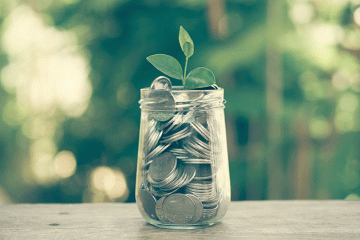Getting into the property market can be a scary, and saving the money to get your foot in the door can be daunting. But it needn’t be. Here are some tips on how to save for your first home.
Know what you can spend
The first step to saving for a deposit is working out how much money you can afford to spend on a property. This will largely depend on how much you can raise for a deposit. While many lenders will now let you borrow up to 95 per cent of the property price, it’s still wise to save as much money as possible to put down. And remember, there will be other expenses before you even step foot into the property, including stamp duty, inspection costs, solicitor fees, moving costs, and various forms of insurance.
Set a goal and stick to it
Consider what you’ll need as a deposit, as well as all other expenses you’ll need to fork out for. With this number in mind, work out when you would like to reach this goal. By looking at these two factors together, you should be able to work out how much money you need to save at regular intervals. It’s helpful if the intervals match your pay cycle. For example, if you’re paid fortnightly, put the amount aside fortnightly. And remember, it’s all well and good to set a savings goal and a time frame, but it won’t do you any good if you don’t stick to it. In order to do this, you’ll have to look at your income and expenses.
Budgeting is key
Often unnecessary expenses go unchecked. When saving for something as large as a property, it’s imperative you fully understand exactly where your money is going. If you don’t, you won’t know where you can cut back to increase your savings. It may be wise to keep a record of all income and expenses for one to two months, to get a handle on everything. Set these costs out in a spreadsheet, and you will be able to accurately determine where your biggest costs are, and what you can let go. There are plenty of apps that can help you keep track of your spending. One of the better ones out there is TrackMySPEND, by MoneySmart. Also, if everything is written down, it’s easier to work out whether your savings goal is actually realistic. If not, you can make changes.
Cut back
It’s important to remember that just because you’re saving, it doesn’t mean you need to cut back completely on all fun. However, there are some simple measures you can take to reduce your spending – your spreadsheet will help determine where you can save. For example, if you find you are spending a lot on eating out, cook more at home. This will save you loads of money, especially if you find you are buying lunch most days during the week. Simply cook more dinner and take the leftovers.
Another common area where people seem to be spending unnecessarily is gym memberships. If you feel you are using the gym enough to get the full bang for your buck, ok. However, if you haven’t been in the past six months, consider letting go. Or alternatively, look for a cheaper alternative. You can also look for competitive alternatives for utilities such as your phone and Internet.
But remember, don’t be too cut-throat. Saving is going to be a lot harder if you resent it, so don’t cut out all of your fun or luxury expenses, and don’t hibernate for fear of spending money. You may want to consider setting smaller savings goals and then rewarding yourself each time you achieve one, if you’re feeling the savings strain.
Change up how you’re living
If you’re living out of home, rent can considerably eat into your ability to save, especially if you’re living alone. This can be fixed. While it may not seem that appealing, moving back in with your parents may be the best option for you. Moving back in will most likely reduce your rent significantly, if not cut it out all together, and you’ll be saving money on utilities. You may even find you start saving money on groceries.If moving back in with your family isn’t an option, consider finding a flatmate to share the expenses with you, or looking for cheaper accommodation options.
Put your money in the right place
It’s all well and good to save money, but where exactly should you be putting it? It’s always best to talk to the experts when it comes to banking, but your first consideration should be a high-interest savings account. There may be some rules around minimum deposits, fees and withdrawals, so always do your research and shop around before committing to anything. If you think you’ll be tempted to withdraw from a savings account, you can look at other methods, for example a term deposit. Much like a savings account, term deposits tend to be high interest, however the funds generally cannot be accessed without incurring a penalty.


